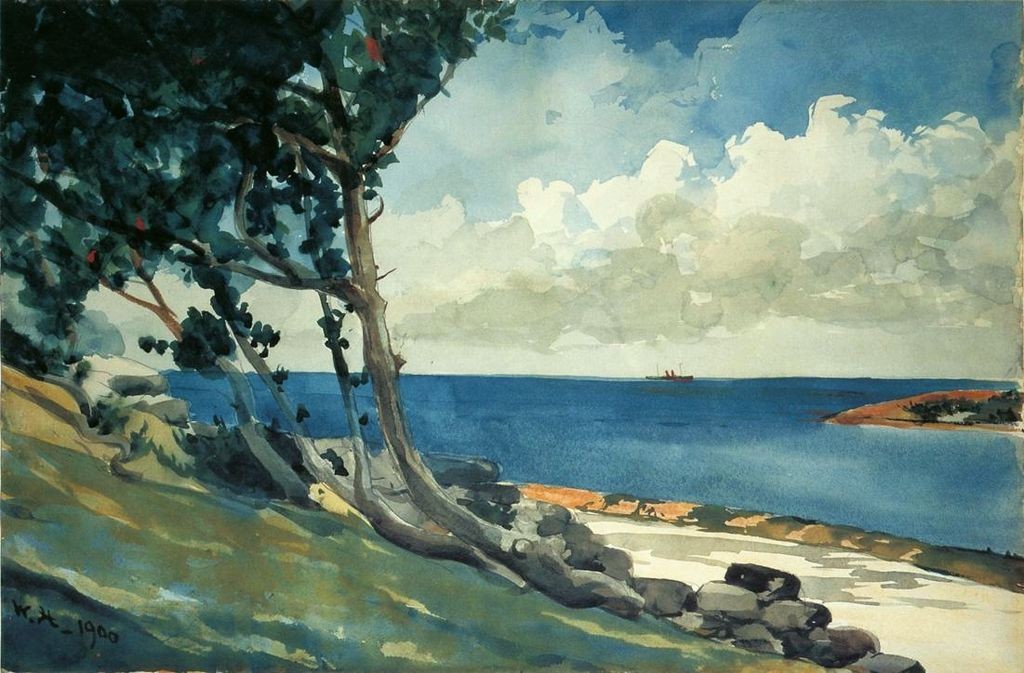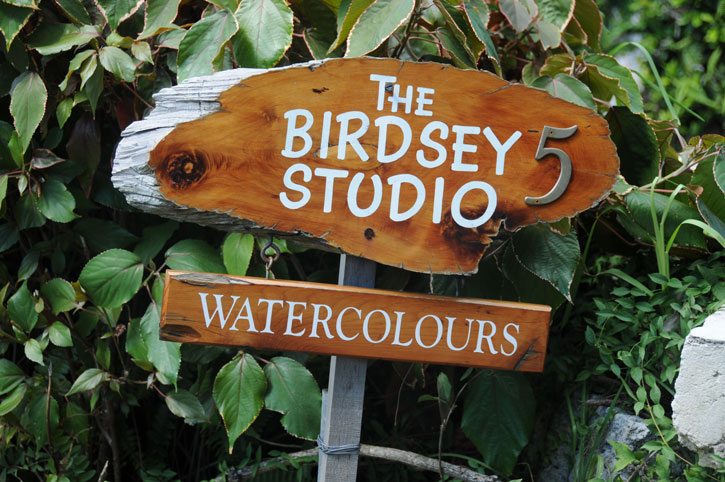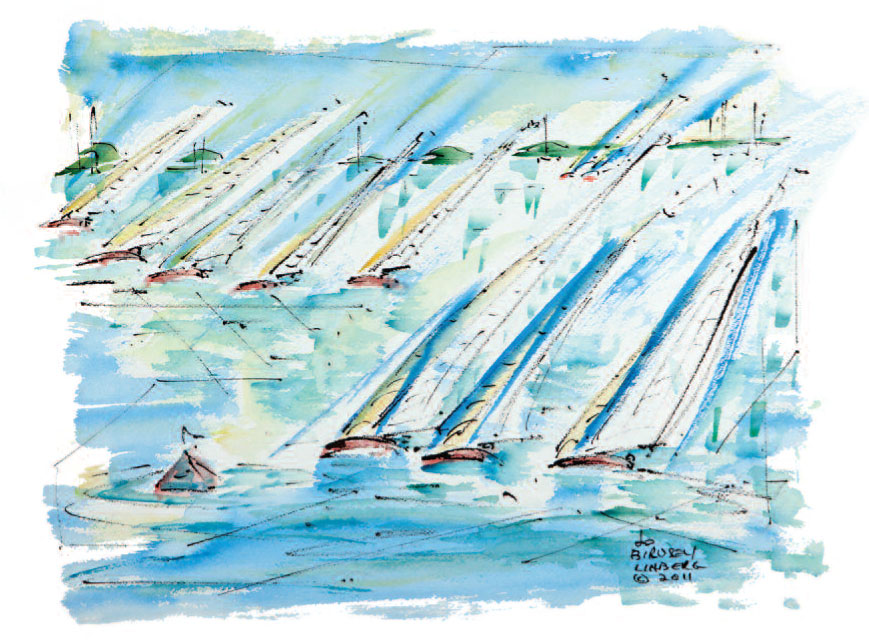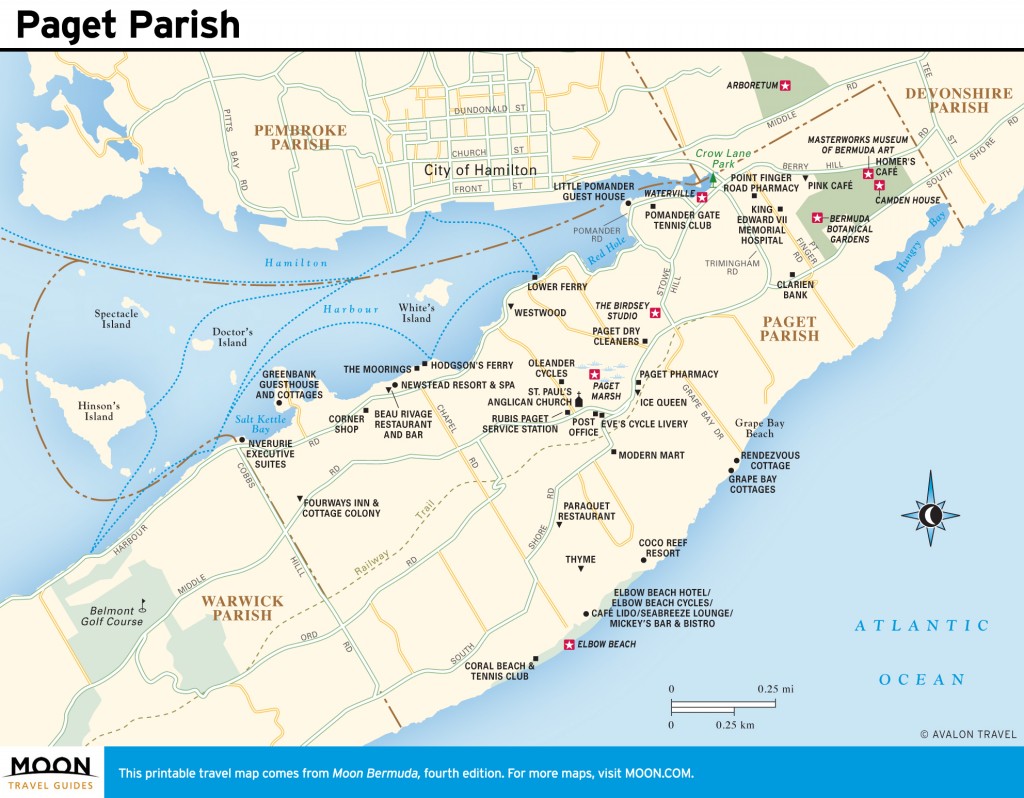
North Road, Bermuda by Winslow Homer. Photograph courtesy of The Athenaeum, this painting hangs in the Pennsylvania Academy of the Fine Arts.
Scores of artists made their way to Bermuda in the 18th, 19th, and 20th centuries, finding respite from “real world” challenges in the island’s sea, sun, tropical colors, unusual light, flora and fauna, and human personalities.Scores of artists made their way to Bermuda in the 18th, 19th, and 20th centuries, finding respite from “real world” challenges in the island’s sea, sun, tropical colors, unusual light, flora and fauna, and human personalities. In the process, many found fresh energy to paint and draw, reviving stalled careers or launching new artistic avenues that would win them further celebrity back in their home environments.O’Keeffe recovered from a nervous breakdown during her 1933-1934 sojourns in Somerset, where she eschewed her typical explosive colors for charcoal sketches of banana flowers and banyan trees. Fauvist E. Ambrose Webster (1869-1935) was struck by the island’s palette of purples, blues, and oranges, which he used to capture evocative landscapes as well as bold portraits of native Bermudians. And Homer, one of the most influential American painters of the 20th century, enjoyed exploring the coastline by horse and buggy, by foot, and by ferry when he visited Bermuda in 1899 and 1900, recording his sightseeing in 21 known watercolors of the island, which he proclaimed “as good an example as I have ever done.”
Today the works of Bermuda by these and other internationally renowned artists from North America and Europe are being brought back to the island, thanks to the efforts of the Masterworks Foundation. The nonprofit group opened a dedicated $9 million museum—the Masterworks Museum of Bermuda Art—in Paget’s Bermuda Botanical Gardens in 2008 to showcase the collection. Masterworks has gathered nearly 1,000 artworks, photos, and artifacts, among them: two O’Keeffe charcoals; two of Homer’s seascapes, Inland Water and Bermuda (The S.S. Trinidad); an Andrew Wyeth street scene of St. George’s (Royal Palms); Ross Sterling Turner’s impressionist views of gardens and neighborhood cottages; and photographer Karl Struss’s three-dimensional color record of a postwar island in the 1950s. These and other works are featured Masterworks at 25, a 2012 coffee-table book celebrating the group’s 25th anniversary.

Artist Jo Birdsey-Linberg’s studio carries on a family legacy. Photo © Rosemary Jones.
Bermuda travelers who met Alfred Birdsey (1912-1996) would not easily forget him. The unassuming but prolific painter welcomed thousands of visitors over the years to his Paget studio, where he often treated them to tea and a chat, no matter whether any art changed hands.
Renowned outside of Bermuda, his Impressionistic, even Asian-influenced, brushstrokes of island landscapes, yachts, harbors, and backstreets revolutionized the way Bermuda was captured in art and caught the imagination of collectors world-wide.
Today his daughter, Jo Birdsey-Linberg, carries on the family tradition at The Birdsey Studio (Rosecote, 5 Stowe Hill, Paget Parish, tel. 441/236-6658, [email protected], 10:30am-1pm Mon.-Fri., appointments recommended). Like her father, she breaks artistic conventions—and makes guests feel entirely at home. Birdsey-Linberg’s breezy watercolor landscapes and whimsical animal portraits—popular children’s gifts—range in price from $80 to $450; oils are priced $400 and up. The studio also sells note cards of Alfred Birdsey’s work, which Birdsey-Linberg is in the process of memorializing in a book.
Park your scooter in front of the house and follow the path on the left to the back garden, where the studio is located amid roses, lilies, cacti, and paw-paw trees. Birdsey-Linberg, a Latin scholar, musician, and mother, can be found here most weekday mornings, with her “assistant managers”—two miniature dachshunds, Mango and Pickle.

Alfred Birdsey’s daughter, Jo Birdsey-Linberg, carries on the family tradition in Paget Parish.

Paget Parish
Excerpted from the Fourth Edition of Moon Bermuda.